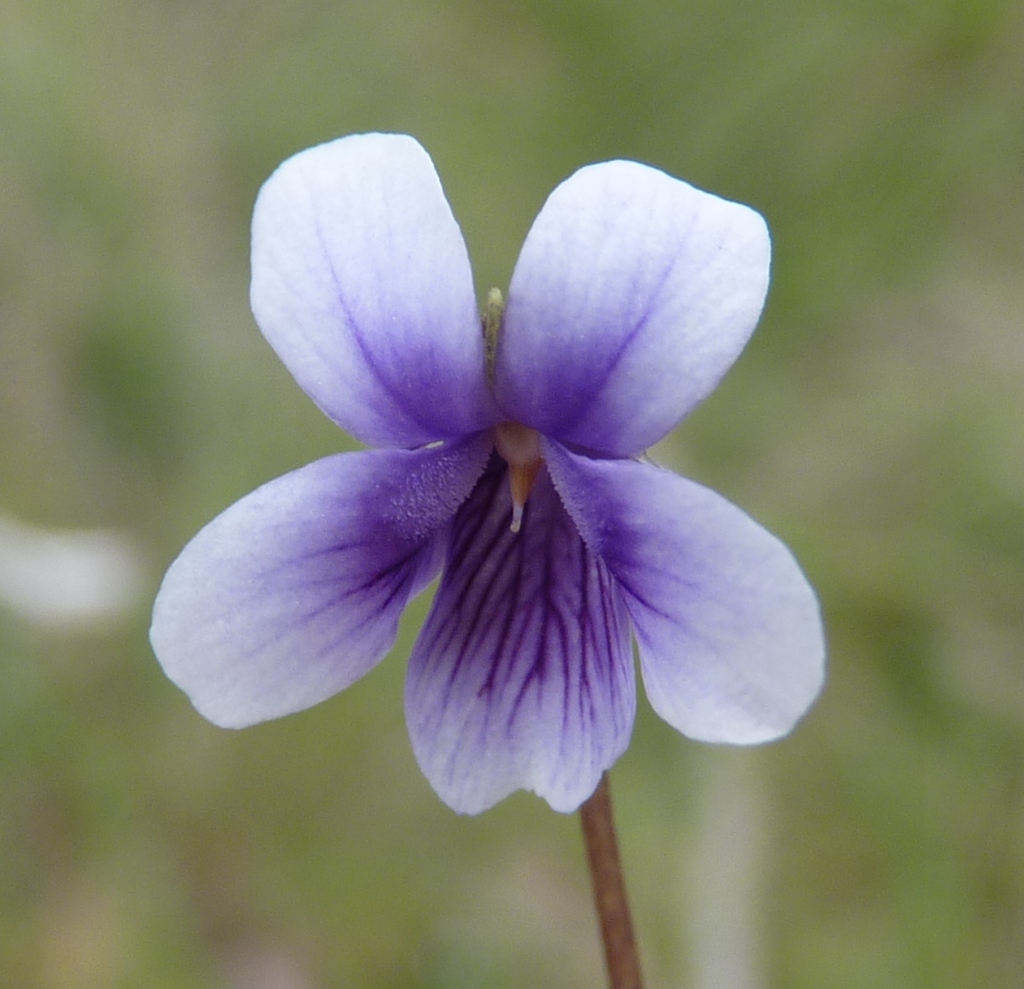Viola hederacea
Labill. Ivy-leaved VioletStoloniferous perennial herb, glabrous to pubescent. Leaves tufted; lamina reniform to more or less semicircular, 5–35 mm long, 5–50 mm wide, base broadly cordate, truncate or rarely somewhat cuneate, apex obtuse, margins entire to scalloped or broadly toothed; petioles 2–8 cm long; stipules free, linear-lanceolate, 2–8 mm long, laciniate. Flower-scapes (3–)6–17 cm long, mostly subequal to or exceeding leaves, bracteoles near middle. Sepals lanceolate, 3–6 mm long, acute, basal appendages small; petals 7–10 mm long, 2-coloured, mauve-violet and white, the boundary between the two colours diffused, lower (anterior) petal obovate, lacking a spur, the central 3 longitudinal nerves not strictly parallel and often anastomosing, lateral petals bearded (very rarely glabrous), twisted through approximately 90 degrees. Capsule ovoid, 4–6 mm long. Seeds ovoid, 1.2–2 mm long, dull, mottled cream and brown to uniformly reddish-brown. Flowers mostly Oct.–Jan.
Wim, GleP, Brid, VVP, VRiv, MuF, GipP, OtP, WaP, Gold, CVU, GGr, DunT, NIS, EGL, EGU, WPro, HSF, HNF, OtR, Strz, MonT, HFE, VAlp. Also SA, NSW, Tas. Widespread, from the northern foothills of the Dividing Range south to the coast, mostly in sheltered, moist habitats from sea-level to subalps.
Forms from high subalpine and alpine areas are commonly smaller plants with foliar and floral dimensions at the lower end of the ranges provided and often with darker flowers. At least some of these may represent hybrids between V. hederacea and V. fuscoviolacea.
Previously including more recently segregated members of the complex (e.g. V. banksii, V. eminens), while other entities formerly regarded as subspecies of V. hederacea have been elevated to species rank (V. cleistogamoides, V. fuscoviolacea). Viola hederacea subsp. seppeltiana has been shown to have little relationship with V. hederacea and is treated here as V. sieberiana. Thiele et al. (2018) have determined that the populations from the Baw Baws are consistent with V. hederacea subsp. curtisiae, which was thought to be endemic to Tasmania. With V. hederacea subsp. curtisiae now raised to species rank, V. hederacea is now without infraspecies (Thiele et al. 2018). See profile under that name.
 Spinning
SpinningSynonyms
Thiele, K.R.; de Salas, M.; Walsh, N.G.; Messina, A.; Little, R.J.; Prober, S.M. (2018). Viola curtisiae, a new rank for a poorly understood species, with notes on V. hederacea subsp. seppeltiana. Muelleria 36: 107–111.



